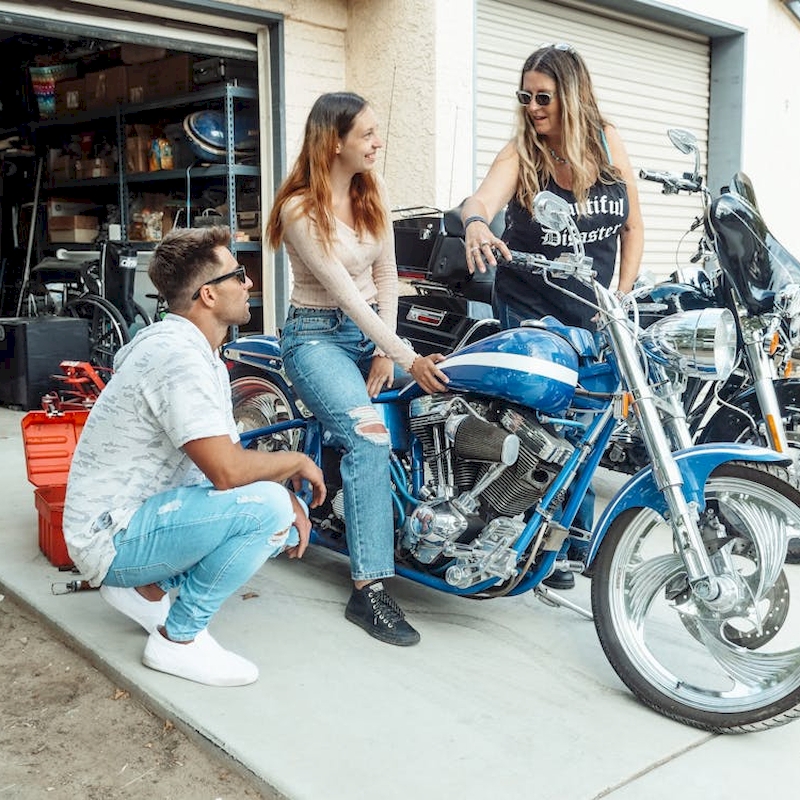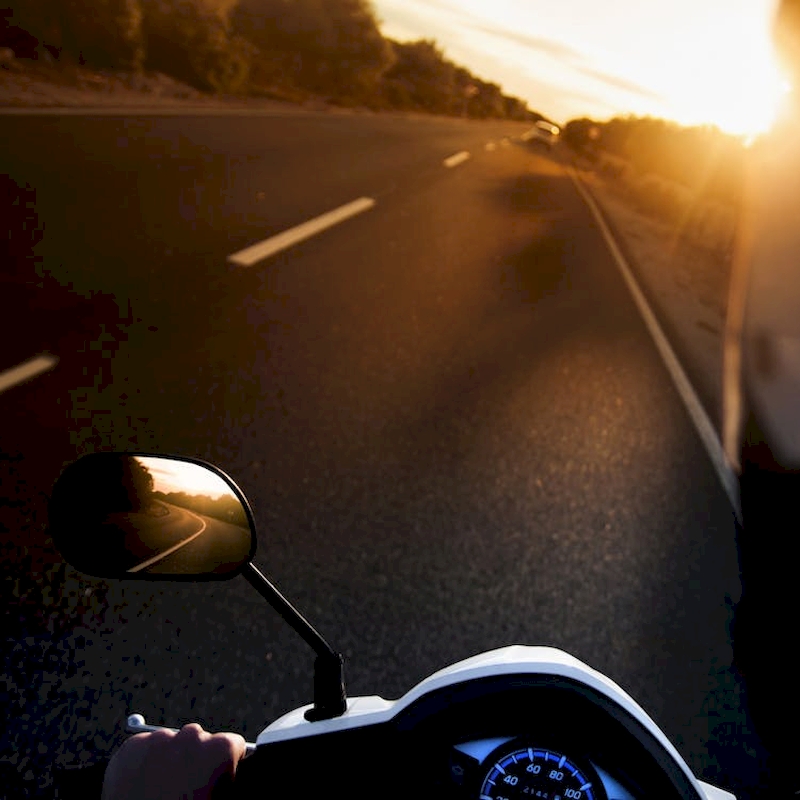For avid motorcyclists seeking to capture every thrilling moment of their rides, finding the best motorcycle helmet camera is essential. These cutting-edge devices not only allow riders to record their journeys but also enhance safety by providing valuable footage in case of accidents. With numerous options available, selecting the perfect helmet camera involves considering features such as video quality, durability, ease of use, and additional functionalities. This comprehensive guide will help you navigate the myriad of choices to find the best motorcycle helmet camera that suits your needs and elevates your riding experience.
 Why Choose a Motorcycle Helmet Camera?
Why Choose a Motorcycle Helmet Camera?
Motorcycle helmet cameras have revolutionized the way riders document their adventures. By mounting a camera on your helmet, you can effortlessly record high-definition videos of your rides, capturing scenic landscapes, exhilarating maneuvers, and memorable moments. Moreover, these cameras offer practical benefits such as:
Enhanced Safety and Accountability
In the event of an accident, a motorcycle helmet camera can provide crucial evidence, helping to determine fault and streamline insurance claims. This added layer of protection ensures that riders have reliable documentation of incidents, promoting accountability on the roads.
Sharing and Reliving Experiences
A helmet camera allows riders to share their experiences with friends, family, and the broader motorcycling community. Whether it’s a picturesque sunset ride or a challenging off-road trail, these cameras make it easy to relive and share your adventures through high-quality videos and images.
Improving Riding Skills
Reviewing footage from your rides can help identify areas for improvement, such as cornering techniques, braking points, and overall riding posture. By analyzing your performance, you can enhance your skills and become a more confident and competent rider.
Key Features to Consider
Selecting the best motorcycle helmet camera involves evaluating several critical features to ensure you get a device that meets your specific needs. Here’s what to look for:
Video Quality and Resolution
High video quality is paramount for capturing clear and detailed footage. Look for cameras that offer at least 1080p resolution, though 4K models provide even sharper images. Additionally, consider the frame rate; higher frame rates result in smoother videos, especially during fast-paced rides.
Durability and Weather Resistance
Motorcycling exposes cameras to various elements, including rain, dust, and vibrations. Choose a helmet camera that is built to withstand harsh conditions with sturdy construction and waterproof or weather-resistant ratings, such as IPX7 or higher.
Battery Life and Storage
Long battery life ensures that your camera can record extended rides without needing frequent recharges. Additionally, ample storage capacity, supported by expandable memory options like microSD cards, allows you to capture hours of footage without worrying about running out of space.
Ease of Use and Mounting Options
A user-friendly interface and intuitive controls are essential for operating the camera without distractions while riding. Moreover, versatile mounting options, such as adjustable straps or magnetic mounts, ensure that the camera stays securely in place on your helmet.
Field of View and Stabilization
A wide field of view captures more of the surrounding environment, providing a comprehensive perspective of your ride. Optical or electronic image stabilization is also crucial for minimizing shake and ensuring smooth, watchable videos even on bumpy roads.
Connectivity and Additional Features
Modern helmet cameras often come with connectivity options like Wi-Fi or Bluetooth, allowing you to easily transfer videos to your smartphone or other devices. Additional features such as GPS tracking, voice control, and live streaming can further enhance the functionality of your camera.
 Top 5 Motorcycle Helmet Cameras in 2024
Top 5 Motorcycle Helmet Cameras in 2024
After extensive research and analysis, we’ve identified the top five best motorcycle helmet cameras that offer exceptional performance, durability, and features to meet the diverse needs of riders.
1. GoPro HERO12 Black
The GoPro HERO12 Black continues to set the standard for action cameras with its unmatched video quality and versatile features.
Features and Benefits
- 4K Resolution at 60fps: Captures stunningly clear and smooth videos, perfect for showcasing the full intensity of your rides.
- HyperSmooth 6.0 Stabilization: Provides cinematic-level stabilization, ensuring your footage remains steady and watchable.
- Durable and Waterproof: Built to withstand extreme conditions with a waterproof rating up to 33ft (10m) without a case.
- Modular Accessories: Compatible with a wide range of mounts and accessories, allowing for customized setups.
- Long Battery Life: Extended recording time ensures you can document longer rides without interruption.
Why It’s the Best Choice
The GoPro HERO12 Black stands out for its superior video quality, robust build, and extensive accessory compatibility. It’s an excellent choice for riders who demand high-performance footage and versatile mounting options.
2. Garmin VIRB Ultra 30
The Garmin VIRB Ultra 30 is renowned for its advanced GPS features and reliable performance, making it a top contender in the helmet camera market.
Features and Benefits
- 4K Video Recording: Provides crystal-clear video quality with vibrant colors and sharp details.
- Built-In GPS: Tracks speed, distance, elevation, and more, integrating this data directly into your videos for an enhanced viewing experience.
- Voice Control: Allows hands-free operation, ensuring you can control the camera without distracting yourself from riding.
- Waterproof Housing: Offers protection against rain and splashes, making it suitable for all-weather conditions.
- Live Streaming Capability: Enables real-time sharing of your rides with others, perfect for social media enthusiasts.
Why It’s the Best Choice
The Garmin VIRB Ultra 30 excels in combining high-quality video with comprehensive GPS tracking and voice control. It’s ideal for riders who want detailed ride data integrated into their footage for both safety and sharing purposes.
3. Sena Veos X
The Sena Veos X offers seamless integration with helmet communication systems, making it a favorite among motorcyclists who prioritize connectivity.
Features and Benefits
- 4K UHD Recording: Delivers exceptional video clarity and detail, capturing every aspect of your ride.
- Full Duplex Communication: Integrates effortlessly with Sena’s helmet communication systems, allowing for hands-free calls and music streaming.
- Voice Control and Gesture Control: Enables easy operation without the need to stop or fumble with controls.
- GPS and G-Metrix Data Logging: Records accurate ride data, enhancing the safety and functionality of the camera.
- Durable and Weatherproof: Designed to withstand tough riding conditions with a rugged build and waterproof rating.
Why It’s the Best Choice
The Sena Veos X is perfect for riders who value connectivity and communication while riding. Its integration with communication systems and advanced control options make it a versatile choice for tech-savvy motorcyclists.
4. Sony FDR-X3000
The Sony FDR-X3000 is known for its exceptional image stabilization and high-quality video output, catering to riders who demand professional-grade footage.
Features and Benefits
- Balanced Optical SteadyShot: Offers superior image stabilization, reducing shake and ensuring smooth video playback.
- 4K HDR Recording: Captures ultra-high-definition video with enhanced dynamic range, providing vivid and lifelike images.
- Fast Object Tracking: Maintains focus on moving subjects, ensuring important details are always in frame.
- Waterproof and Durable: Reliable performance in various weather conditions without needing additional casing.
- Touchscreen Interface: Simplifies navigation and camera control with an intuitive touch display.
Why It’s the Best Choice
Sony’s FDR-X3000 stands out for its advanced stabilization technology and professional video quality. It’s ideal for riders who want their footage to look as polished and cinematic as possible.
5. Apeman A100
The Apeman A100 offers a budget-friendly option without compromising essential features, making it accessible for riders new to helmet cameras.
Features and Benefits
- 1080p Full HD Recording: Provides clear and detailed video at an affordable price point.
- Wide-Angle Lens: Captures a broader field of view, ensuring more of your surroundings are included in the footage.
- Waterproof Case: Protects the camera from rain and splashes, suitable for various riding conditions.
- Loop Recording: Continuously records and overwrites old footage, ensuring you never run out of storage.
- Compact Design: Lightweight and portable, easy to mount on any helmet without adding bulk.
Why It’s the Best Choice
The Apeman A100 is perfect for riders seeking a reliable and affordable helmet camera. It delivers essential features at a budget-friendly price, making it an excellent entry-level option.
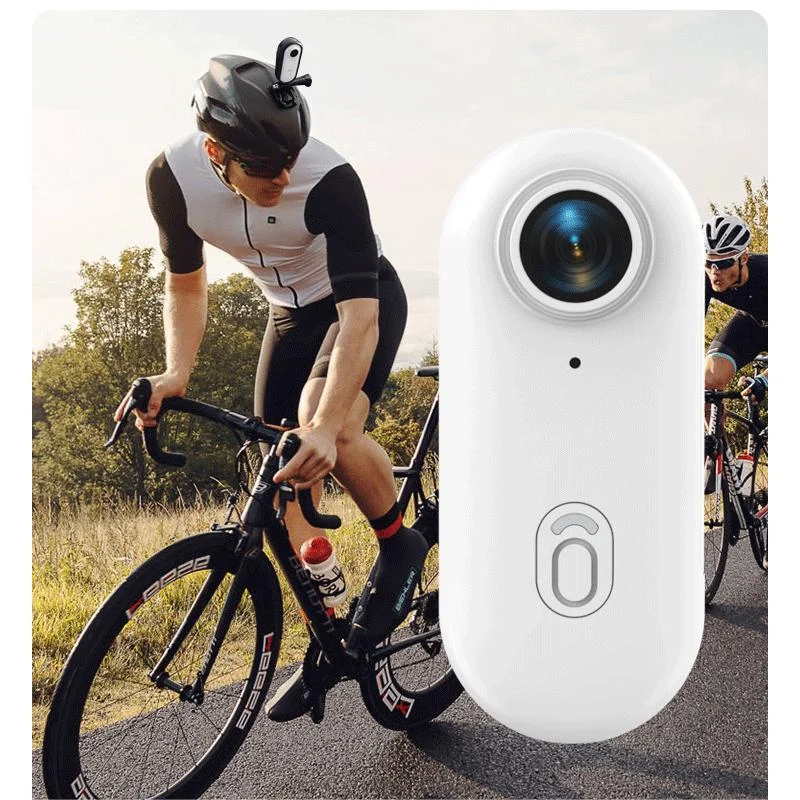 Installation and Mounting Tips for Motorcycle Helmet Cameras
Installation and Mounting Tips for Motorcycle Helmet Cameras
Proper installation and mounting of your best motorcycle helmet camera are crucial for ensuring stable footage and preventing distractions while riding. Follow these tips to set up your camera effectively:
Choosing the Right Mount
Select a mounting system that is compatible with your helmet and the camera model. Common options include adhesive mounts, strap mounts, and visor mounts. Adhesive mounts provide a secure attachment but require a clean surface for optimal grip. Strap mounts offer flexibility and easy removal, while visor mounts are great for quick adjustments.
Positioning for Optimal View
Mount the camera at a location that provides a clear and unobstructed view of the road ahead. Typically, the front of the helmet near the visor is ideal. Ensure that the camera does not interfere with your vision or movement. Adjust the angle to capture the desired field of view without causing glare from the sun or headlights.
Securing the Camera Properly
Ensure that the camera is firmly attached to the mount to prevent it from shifting or vibrating during rides. Double-check all connections and make sure the camera is tightly secured. Loose mounting can result in shaky footage and potential safety hazards.
Testing Before Rides
Before heading out, conduct a test ride to verify that the camera is properly positioned and secure. Check the video footage for clarity and stability, making any necessary adjustments to the angle or mounting position.
Using Protective Cases and Covers
Invest in protective cases or covers to shield your camera from dirt, dust, and impacts. This is especially important for off-road riding or adverse weather conditions, ensuring that your camera remains functional and records clear footage.
Comparing Top Motorcycle Helmet Cameras: Which One Fits Your Needs?
Choosing the best motorcycle helmet camera involves comparing the top models based on their features, performance, and value. Here’s a comparison of the leading options to help you make an informed decision:
GoPro HERO12 Black vs. Garmin VIRB Ultra 30
The GoPro HERO12 Black offers superior video quality and extensive accessory compatibility, making it ideal for riders who demand high-performance footage. On the other hand, the Garmin VIRB Ultra 30 excels in GPS tracking and voice control, catering to those who prioritize integrated ride data and hands-free operation. While both cameras provide excellent video quality, the choice depends on whether you value advanced stabilization and versatility (GoPro) or comprehensive ride analytics (Garmin).
Sena Veos X vs. Sony FDR-X3000
The Sena Veos X is perfect for riders who seek seamless integration with helmet communication systems and value connectivity features such as live streaming and voice control. Conversely, the Sony FDR-X3000 stands out with its professional-grade image stabilization and 4K HDR recording, appealing to riders who prioritize cinematic footage quality. If connectivity and communication integration are crucial, choose the Sena Veos X. For top-tier video stabilization and dynamic range, the Sony FDR-X3000 is the better option.
Apeman A100 vs. GoPro HERO12 Black
The Apeman A100 offers a budget-friendly alternative with essential features suitable for entry-level riders or those who want reliable footage without a hefty investment. In contrast, the GoPro HERO12 Black provides advanced features, higher video resolution, and greater durability, making it a premium choice for serious riders. For those new to helmet cameras or on a tight budget, the Apeman A100 is an excellent choice. However, experienced riders seeking high performance and versatility should consider the GoPro HERO12 Black.
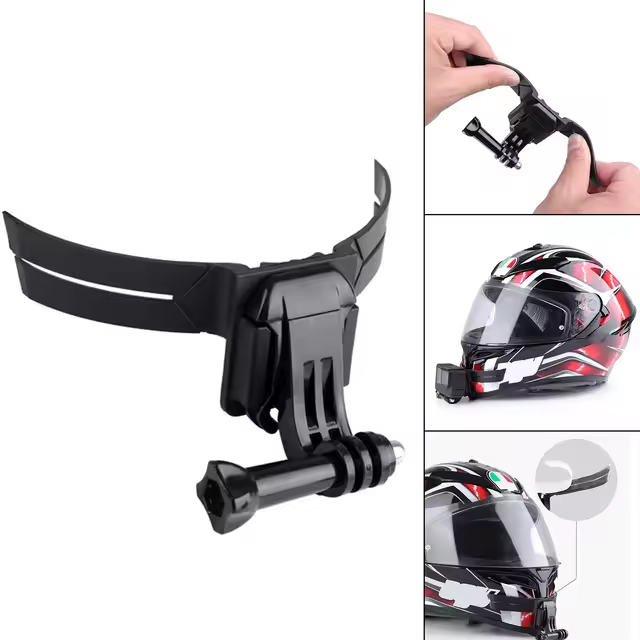 Tips for Maximizing the Use of Your Motorcycle Helmet Camera
Tips for Maximizing the Use of Your Motorcycle Helmet Camera
To fully leverage the capabilities of the best motorcycle helmet camera, consider the following tips:
Plan Your Recording Sessions
Before going on a ride, plan what you want to capture. Whether it’s a scenic route, a specific event, or a challenging trail, having a clear idea helps you organize your recording settings and ensures you don’t miss important moments.
Optimize Camera Settings
Adjust the camera settings based on the riding conditions. For bright sunlight, reduce the brightness and enable HDR mode to prevent overexposure. In low-light conditions, increase the resolution and frame rate to capture clearer footage. Experiment with different settings to find what works best for your riding environment.
Use External Storage Solutions
Invest in high-capacity memory cards to ensure you have enough space for your recordings. Additionally, consider using cloud storage or external drives to back up your footage regularly. This not only protects your recordings from loss but also frees up space on your camera for future rides.
Utilize Mounting Flexibility
Take advantage of different mounting options to experiment with various perspectives. Mounting the camera on the chin, side, or top of the helmet can provide unique angles and varied footage, enhancing the overall viewing experience.
Engage with the Community
Join online communities and forums dedicated to motorcycle helmet cameras. Engaging with fellow riders allows you to share tips, exchange experiences, and stay updated on the latest advancements and accessories in the market.
Regularly Review and Edit Your Footage
After recording your rides, review the footage to identify highlights and areas for improvement. Use editing software to enhance video quality, trim unnecessary segments, and add annotations or music to create engaging content for sharing with others.
Frequently Asked Questions
To further assist you in selecting the best motorcycle helmet camera, here are answers to some frequently asked questions:
What is the best motorcycle helmet camera for beginners?
For beginners, the Apeman A100 is an excellent choice due to its affordability and essential features. It provides reliable recording capabilities without overwhelming complexity, making it ideal for those new to helmet cameras.
How do I choose the right motorcycle helmet camera?
Consider factors such as video quality, durability, battery life, ease of use, mounting options, and additional features like GPS tracking or connectivity. Assess your specific needs and riding conditions to select a camera that offers the best combination of these features.
Can I use a regular action camera as a motorcycle helmet camera?
Yes, many regular action cameras like the GoPro HERO series can be used as motorcycle helmet cameras with the appropriate mounting accessories. However, ensure that the camera offers features suited for riding, such as robust stabilization and weather resistance.
Do helmet cameras interfere with communication systems?
Some helmet cameras, like the Sena Veos X, are designed to integrate seamlessly with communication systems, allowing for hands-free operation and minimal interference. However, always check compatibility and consider the placement of the camera to avoid disrupting communication devices.
How do I maintain my motorcycle helmet camera?
Regularly clean the camera lenses, update firmware, store the camera in a dry place, and inspect for any signs of wear or damage. Applying a light lubricant to moving parts and ensuring all mounts are secure will help maintain the camera’s functionality and longevity.
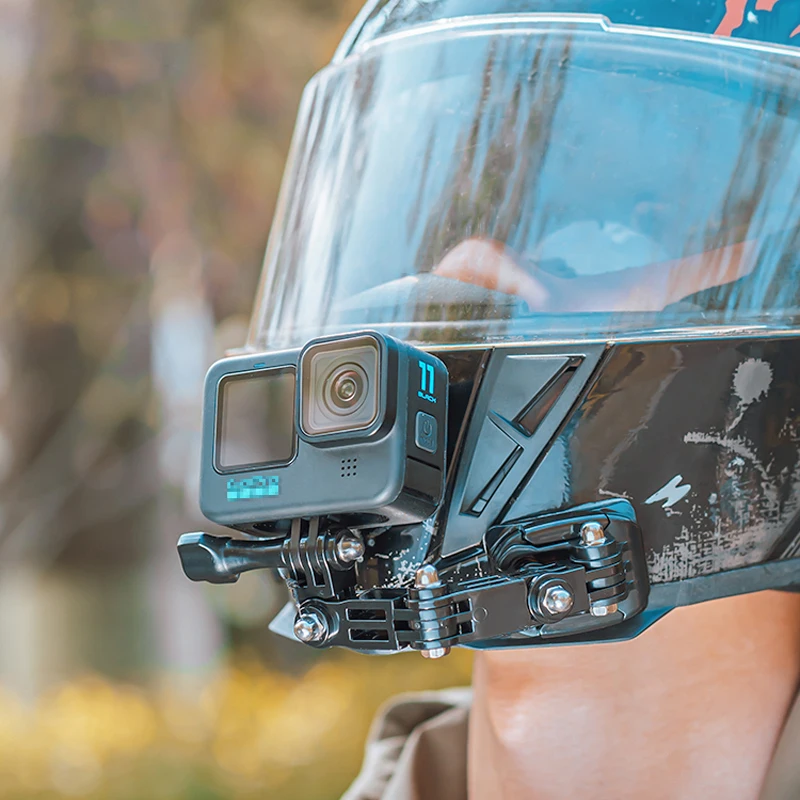 Conclusion
Conclusion
Selecting the best motorcycle helmet camera can significantly enhance your riding experience by capturing every exhilarating moment and ensuring your safety on the road. Whether you prioritize high-definition video quality, advanced stabilization, seamless connectivity, or budget-friendly options, there is a helmet camera tailored to meet your needs. By understanding the key features, comparing top models, and following best practices for installation and maintenance, you can confidently choose a camera that not only records your adventures but also enriches your overall riding enjoyment.
